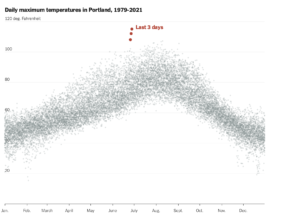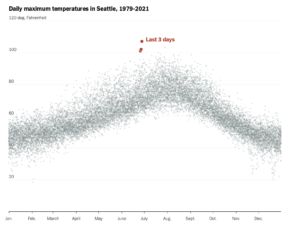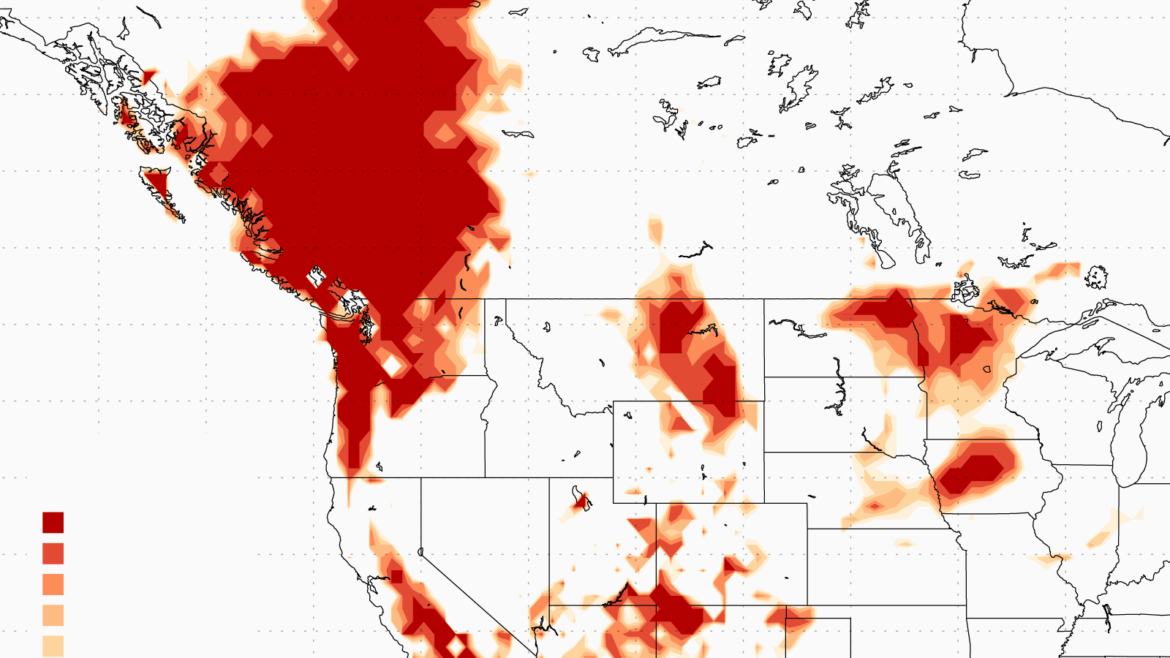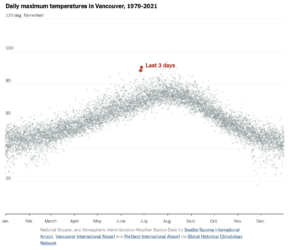Happy 4th of July! Boy, where is this year going? I hope you have a great holiday weekend and enjoy a new sense of independence as the pandemic restrictions lift as more and more people get vaccinated. I know though that some of you receiving this are not yet vaccinated so please go do it now. You don’t want to get the Delta strain and/or infect anyone else including my grandsons who are still too young to get the shots. The consequences of NOT getting vaccinated are exponentially greater to you and society then refraining from the shot(s).
OK, I’ll get off my soapbox. While the headlines this week have mostly been about frightenly severe weather I’m going back to automotive news today before sharing these other headlines later.
I know that some, or even many, of you will discount the fact that electric vehicle (EV) registrations are ONLY 2.3% of the total. Same as you did when they were .2% or .75% or even 1.9%. But the fact is they have to be at 2.3% before they can get to 100%! And the rate of growth is increasingly greater. I’ve linked the following article but here’s some of the data:
“In a recent Pew Research Center survey, 7% of U.S. adults said they currently have an electric or hybrid vehicle, and 39% said they were very or somewhat likely to seriously consider buying an electric vehicle the next time they’re in the market for new wheels.”
“As of 2020, nearly 1.8 million EVs were registered in the U.S., more than three times as many as in 2016, according to the International Energy Agency (IEA).”
Today’s electric vehicle market: Slow growth in U.S., faster in China, Europe
As more and more manufacturers offer a vast number of new electric options their market share will grow. My advice is to think twice about buying another internal combustion engine (ICE) vehicle. As demand for them wains, so will their resale/trade in value. Here’s the scoop from the following article.
“The number of electric vehicles registered in the U.S. nearly doubled in the first four months of 2021 as overall registrations climbed 36 percent.
Registrations of battery-electric vehicles jumped 95 percent to 133,509 in the January through April period from the same period of 2020, according to Experian data. That gave EVs 2.3 percent of the market, up from 1.6 percent last year.”
Scroll down past the following article for this weeks headlines. I know that there are still a few people that get this blog that still believe the few scientists that claim that what is happening is entirely natural and normal. Well, tell that to anyone that lives out West especially in Portland, Oregon, Seattle or British Columbia.
EV Share Jumps to 2.3% as Registrations Surge
Their registrations have risen nearly three times faster than overall vehicle registrations in the U.S. through April.
The number of electric vehicles registered in the U.S. nearly doubled in the first four months of 2021 as overall registrations climbed 36 percent.
Registrations of battery-electric vehicles jumped 95 percent to 133,509 in the January through April period from the same period of 2020, according to Experian data. That gave EVs 2.3 percent of the market, up from 1.6 percent last year.
Registrations declined for three of Tesla’s four nameplates: the Model 3, down 12 percent; the Model S, down 63 percent; and the Model X, down 75 percent. But Tesla’s newest offering, the Model Y, saw registrations surge to 53,102 from 2,260 in the year-earlier period, giving the company an overall increase of 71 percent and keeping it in fourth place among luxury brands. The registration data provides the most accurate view into Tesla’s U.S. sales because the automaker doesn’t report monthly or by country.
The headline theme is about the totally off the charts weather and the consequences thereof. Threats to the water and food supply, power outages, and floods. THIS IS NOT NORMAL.
The New York Times
How Weird Is the Heat in Portland, Seattle and Vancouver? Off the Charts.
https://www.nytimes.com/interactive/2021/06/29/upshot/portland-seattle-vancouver-weather.html?mc_cid=3523715d07&mc_eid=8f4760cc57

Jan.Feb.MarchAprilMayJuneJulyAug.Sept.Oct.Nov.Dec.20406080100120 deg. FahrenheitLast 3 days
Daily maximum temperatures in Seattle, 1979-2021
 Jan.Feb.MarchAprilMayJuneJulyAug.Sept.Oct.Nov.Dec.20406080100120 deg. FahrenheitLast 3 days
Jan.Feb.MarchAprilMayJuneJulyAug.Sept.Oct.Nov.Dec.20406080100120 deg. FahrenheitLast 3 daysDaily maximum temperatures in Vancouver, 1979-2021
National Oceanic and Atmospheric Administration Weather Station Data for Seattle-Tacoma International Airport, Vancouver International Airport and Portland International Airport via Global Historical Climatology Network
“We can say extreme weather is happening more as climate changes, and will continue to happen more,” she said. “This heat wave is extraordinary, but this in a sense is not likely to be the last.”
Summer of Outages Looms, EIA Warns Sweltering Nation
Ester Wells
The U.S. Energy Information Administration warned yesterday of widespread summer power disruptions as soaring temperatures across the country stress the grid.
Washington state’s Avista Utilities said it anticipates continued “proactive and targeted protective outages” amid heavy power demand (Energywire, June 30).
“While we plan for the summer weather, the electric system experienced a new peak demand, and the strain of the high temperatures impacted the system in a way that required us to proactively turn off power for some customers,” Avista President and CEO Dennis Vermillion said in a press release.
In the Northeast, Consolidated Edison Inc. asked its 3.5 million customers in New York City and Westchester County yesterday to limit use of energy-intensive appliances as power use soared to record levels. The company was projecting yesterday’s power demand of 12,300 megawatts would exceed last year’s June peak of 11,740 MW.
“Texas put a man on the moon,” Democrat Mike Collier, a candidate for lieutenant governor, said during a news conference. “Now we can’t even keep our lights on.”
Orchards Race to Rescue Cherry Crop from Heat Wave
E&E News from Associated Press
Tuesday, June 29, 2021
Orchard owners in central Washington state are trying to save the cherry crop as a heat wave grips the region, using canopies, deploying sprinklers and sending out workers in the night to harvest cherries.
What a Water Shortage Is Doing to Some of America’s Best Farmland
click on photo for article





